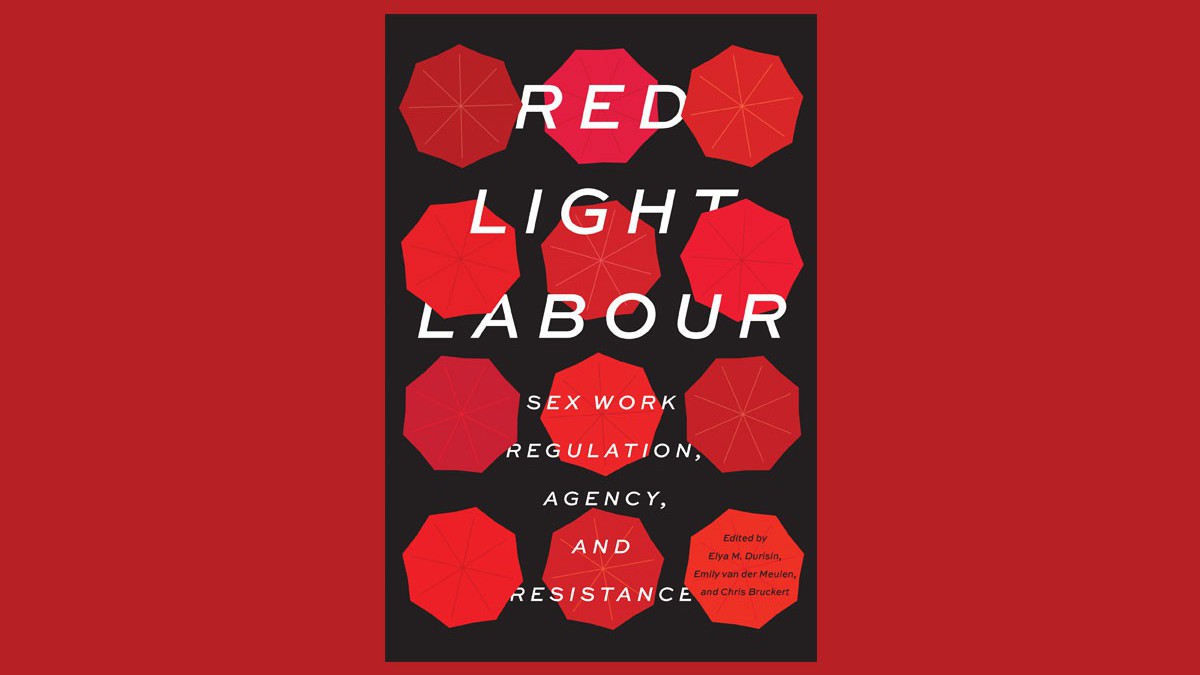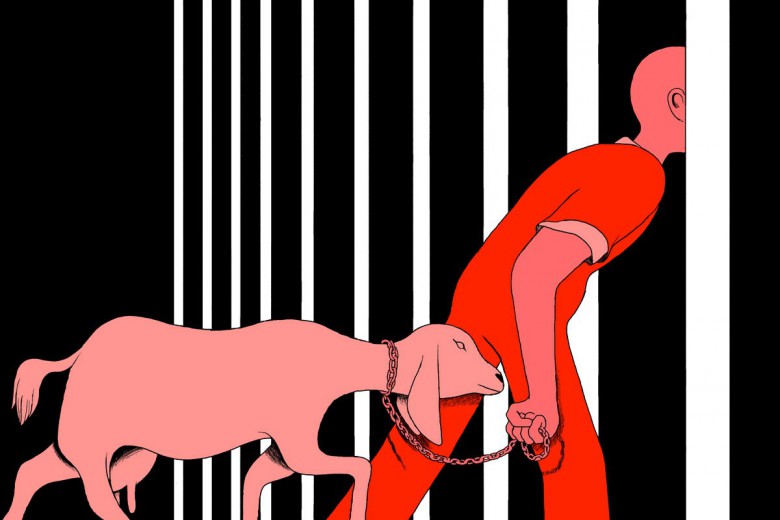In the fall of 2007, I was struggling to find work that could accommodate my disabilities, and I was failing miserably. My depression and anxiety were so severe that I typically only managed to last one or two weeks at any job before I just stopped showing up. I lived in a constant state of panic, wondering how I’d pay my rent each month.
Then, after I broke up with a guy I was dating, he surprised me by asking if he could pay me to continue seeing me. I thought, “what the hell, I’ve already slept with you for free.” For the past 12 years, I’ve continued to do sex work, and it offered me the flexibility I needed to survive.
Before that work, I had to choose between getting groceries and getting my antidepressants. I frequently went off my medication for days or weeks at a time. Sex work allowed me to flourish in a capitalist system in which I was never meant to survive as a queer disabled woman. I could work when my mental health allowed, and as an independent worker, I did not have to continually out myself as disabled every time I needed time off. The relatively high rates of pay meant that in fewer hours I could make the same amounts I might make working full time.
But my experiences in the sex industry do not exist in a vacuum – they are a part of and shaped by the complex histories of stigmatization and criminalization of sex work. Red Light Labour, an edited anthology of academic essays pertaining to sex work in Canada, captures all this complexity and more.
In 2014, Stephen Harper’s Conservative government introduced new sex work legislation aimed at “reducing demand” for prostitution. The new legislation, dubbed the Protection of Communities and Exploited Persons Act (PCEPA), was introduced following a Supreme Court decision that struck down the previous laws as unconstitutional. While the previous legislation outlawed sex workers publicly soliciting clients, keeping or being found in a bawdy-house (also known as a brothel), and third parties living off the earnings of a sex worker, the new legislation makes it illegal to purchase sexual services, provide third-party advertising for sex work, and derive “material benefit” from sex work. On paper, the laws appear to have shifted focus from targeting workers to targeting their clients; in practice, though, as Red Light Labour makes abundantly clear, sex workers and their friends and families, as well as clients, are still subject to criminalization under these new laws.
The book is a direct response to the failures of the Liberal government to respond to repeated calls by sex workers to do something about the PCEPA.
Red Light Labour, published in 2018, is one of the first Canadian books to tackle the working conditions and experiences of a variety of sex workers labouring under the PCEPA. It was also published in the wake of FOSTA/SESTA (Allow States and Victims to Fight Online Sex Trafficking Act/Stop Enabling Sex Traffickers Act), an oppressive set of American laws that holds website administrators and owners responsible for user-posted ads for sex work, in a misguided attempt to fight trafficking. Former Liberal Justice Minister Jody Wilson-Raybould stated in 2015 that she was “definitely […] committed to reviewing the prostitution laws, and sitting down with my officials to assess the best options, and with those they affect directly.” That review never materialized. The book is a direct response to the failures of the Liberal government to respond to repeated calls by sex workers to do something about the PCEPA. It exposes the failure of the government, the police, and others to take seriously the violence against sex workers that criminalization encourages and which is exacerbated by structural factors such as racism, colonialism, and ableism.
The authors collected in this volume tackle tricky subjects – such as youth involvement in sex work – without moral judgments, and they are critical not only of the state and police but also of those who appropriate the language of slavery and abolition; sex-worker exclusionary “feminists” who view sex work as nothing more than violence against women; and those who harass the most visible and vulnerable of our numbers, trans sex workers who are street-based. While the authors contained in this volume advocate for various approaches and perspectives, the overarching framework is that sex work is labour and that carceral approaches such as PCEPA are harmful, both in their construction of sex workers and the sex industry as “a public threat and a public nuisance” and also in their material application.
Despite its academic tone, the book is relatively free of academic jargon, making it accessible to those outside of academia. And rather than simply explaining the laws abstractly, the essays in this collection show how the laws play out in practice and how workers and clients respond to them. In an essay focusing on the advertising prohibition and FOSTA/SESTA, Andrea Sterling explains that the laws have forced the closure of sex worker advertising sites like Backpage. Those sites that remain have severely restricted the language that can be used in ads – nothing can be posted that remotely implies sexual services are on offer. Sex workers don’t just rely on these sites for advertising – they also use them to connect with other workers and share safety information such as client blacklists (see Bee Khaleeli’s article, “‘At least hookers get wages’” in this issue). In 2010, a man contacted me to arrange an appointment. Because I had access to several blacklists – for example, Lyla.ch, formerly the Canadian Escort Recommendation Board, which hosts a sex worker-only forum where workers maintain an extensive database of bad clients across Canada – I discovered that this man had assaulted other workers and I was able to decline his request. Without access to that life-saving information, I might have accepted the booking and been assaulted too.
In other words, the editors of this volume would view my involvement in sex work as both work and a choice made from limited options due to structural inequality.
Crucially, the book does not treat sex workers as victims, but rather as labourers with varying degrees of agency and autonomy – thus connecting the struggle for sex workers’ rights to struggles for the recognition of women’s work, human rights, and labour rights. Understanding sex work as work “challenges embedded stigmatic assumptions of deviance, immorality, and pathology,” the editors write. For example, the fact that I struggle with depression and anxiety has been attributed to my participation in sex work, constructing sex work as a problematic behaviour issuing from my mental illness, rather than as a legitimate survival strategy for a disabled woman.
Despite the significance of the “sex-work-as-work” paradigm for advancing worker’s rights, as Durisin, van der Meulen, and Bruckert rightly contend, “it is important to include an analysis of situations where there are conditions of force or coercion, highly constrained options, or structural inequalities that limit income-generating options,” such as the exclusion of disabled people, like myself, from most mainstream employment and a lack of workplace accommodations for those who do find work. In other words, the editors of this volume would view my involvement in sex work as both work and a choice made from limited options due to structural inequality.
As a sex worker, it is refreshing to read a book that not only considers sex workers experts in their own lives, but actively sought them out as knowledge producers. The editors write that the book showcases “cross-disciplinary research from diverse contributors, including established scholars, student researchers, community activists, and sex workers; many of the authors occupy more than one of these positionalities, illustrating a fluidity between advocate, researcher, and researched.” Several of the authors are current or former sex workers and activists, alongside whom I have worked and fought for sex worker rights. These sex workers are Indigenous, disabled, queer, and trans. While it may not be overtly stated, the collection includes a range of voices and avoids relying only on academics or white, cis, middle-class sex workers.







